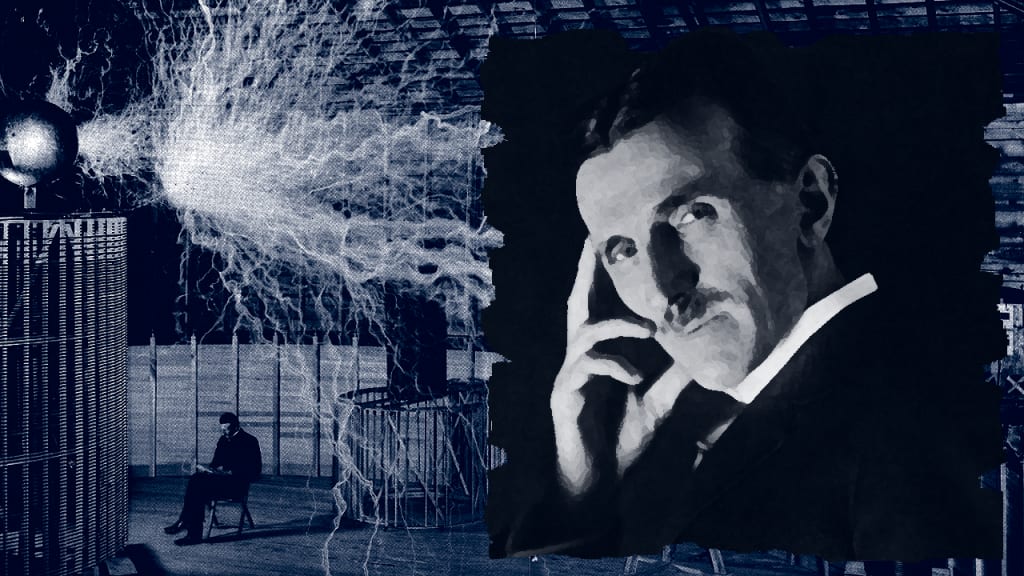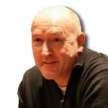Nikola Tesla: A man ahead of his time
Genius whose ideas remain revolutionary 164 years after his birth

It's 164 years ago today that one of the most influential scientists the world has ever known was born, his ideas generating technology that has transformed our lives and is still revolutionary to this day.
Ground-breaking scientist Nikola Tesla was born in Smiljan, in what is now Croatia, on 10 July 1856 during what he claimed was a lightning storm that led to the midwife pronouncing him a "child of the storm", something that stayed with him for the rest of his life and inspired much of his later work as an inventor and engineer.
Tesla discovered and patented the rotating magnetic field, the basis of most alternating-current machinery, and also developed the three-phase system of electric power transmission.
Although an outstanding student, he dropped out of polytechnic and ended up working for the Continental Edison Company, where he focused on electrical lighting and motors. Wishing to meet Thomas Edison himself, Tesla emigrated to the United States in 1884, arriving in New York with four cents in his pocket, a few of his own poems and calculations for a flying machine.
He first found employment with Edison but the two men were far apart in background and methods and soon parted company, Tesla later claiming he was offered the sum of US$50,000 if he could solve a series of engineering problems Edison’s company faced. Having achieved the feat, Tesla said he was then told the offer had just been a joke prompting him to leave Edison's employment.
Approached by a group of investors while digging ditches for US$2 a day, Tesla received funding to perfect a low-cost arc lamp. While the invention was successful and the investors made money, Tesla ended up with no pay and a stack of worthless stock certificates.
Later, gaining investment from the Western Union Company, he opened his first of several laboratories in a small room a short distance from Edison's office. There he successfully constructed and patented his AC poly-phase electrical system.
In May 1888 George Westinghouse, head of the Westinghouse Electric Company in Pittsburgh, bought the patent rights to Tesla’s system of alternating-current dynamos, transformers and motors prompting a huge power struggle between Edison’s direct-current systems and the Tesla-Westinghouse alternating-current approach, which eventually won out.
In 1891 Tesla unveiled one of his most important inventions, the "Tesla coil"... a high-frequency transformer capable of creating very high voltage at low current. And, from his own laboratory, he was able to give his inventive mind free rein... experimenting with shadow-graphs similar to those later used by Wilhelm Rontgen when he discovered X-rays in 1895.
Tesla conducted countless experiments on revolutionary ideas such as carbon button lamps, on the power of electrical resonance and on various types of lighting.
And, in order to allay fears about the dangers of alternating currents, he gave amazing exhibitions in his laboratory in which he lit lamps by allowing electricity to flow through his body, often being invited to lecture at home and abroad.
Westinghouse used Tesla’s alternating-current system to light the Chicago World's Fair in 1893, a key factor in them winning the contract to install the first power machinery at Niagara Falls, which bore Tesla’s name and patent numbers. The project carried power to Buffalo by 1896.
But Tesla encountered many obstacles along the way. In 1895 his Manhattan laboratory was devastated by a fire, which destroyed his notes and prototypes, and at Madison Square Garden in 1898 he demonstrated wireless control of a boat, a stunt many branded a hoax.
Soon after he turned his attention to the wireless transmission of electric power, which he believed could not only distribute unlimited cheap electricity around the globe but also provide for worldwide wireless communication.
Seeking to test his ideas, Tesla built a laboratory in Colorado Springs where he once drew so much power he caused a regional power outage. He also detected signals he claimed emanated from an extraterrestrial source.
Between May 1899 and early 1900 he remained in Colorado Springs where he made what he regarded as his most important discovery: terrestrial stationary waves. By this discovery he proved the earth could be used as a conductor and made to resonate at a certain electrical frequency. He also lit 200 lamps without wires from a distance of 40km and created man-made lightning, producing flashes measuring 41 metres.
Returning to New York in 1900, Tesla began construction of a wireless world broadcasting tower on Long Island, with $150,000 in capital from financier J Pierpont Morgan. Tesla claimed he secured the loan by assigning 51 per cent of his patent rights of telephony and telegraphy to Morgan.
He expected the project would provide worldwide communication and introduce the wireless technology to transmit pictures, messages, weather warnings and stock reports but the project was abandoned because of a financial panic, labour troubles and Morgan’s withdrawal of support.
In 1909 Italian inventor Guglielmo Marconi received the Nobel Prize for the development of radio, Tesla unsuccessfully suing him in 1915 claiming infringement on his patents. That same year, it was rumored Edison and Tesla would share the Nobel Prize, although it never happened. Unsubstantiated speculation suggested their mutual animosity was the cause.
However, Tesla did receive numerous honours and awards throughout his life, including, ironically, the American Institute of Electrical Engineers Edison Medal.
Tesla’s work then shifted to turbines and other projects, but because of a lack of funds his ideas remained in his notebooks, which are still examined by enthusiasts for unexploited ideas to this day.
In the popular imagination, he played the part of a mad scientist, claiming he had developed a motor that ran on cosmic rays; that he was working on a new non-Einsteinian physics that would supply a new form of energy; and that he had discovered a new technique for photographing thoughts.
He was a godsend to reporters who sought sensational copy but a problem for editors who were uncertain how seriously his futuristic prophecies should be regarded. Severe criticism greeted his speculation concerning communication with other planets, his assertions that he could split the earth like an apple and his claim of having invented a death ray capable of destroying 10,000 aeroplanes at a distance of 400km.
Tesla allowed himself only a few close friends, among them were the writers Robert Underwood Johnson, Mark Twain and Francis Marion Crawford, and he was quite impractical in financial matters.
An eccentric, driven by compulsions and a progressive germ phobia, he had a way of intuitively sensing hidden scientific secrets and employing his inventive talent to prove his hypotheses.
Today the name Tesla is regarded as highly as at the height of his career. The airport in Belgrade bears his name, as does the world’s best-known electric car, and the magnetic field strength of MRI scanners is measured in Teslas.
The man was a real-life Prometheus: the mythical Greek titan who raided heaven to bring fire to mankind, yet in punishment was chained to a rock where each day an eagle ate his liver. Tesla scaled great heights to bring lightning down to earth, yet his bizarre creations and uncommon habits eventually led to his downfall, leaving him nearly penniless and alone.
His money long gone, Tesla spent his later years moving from place to place, leaving behind unpaid bills. Eventually, he settled at a New York hotel, where his rent was paid by Westinghouse.
Always living alone, he frequented the local park, where he was regularly seen feeding the pigeons. On the morning of 7 January 1943 he was found dead in his room by a hotel maid at the age of 86.
After his death the US Government immediately impounded his trunks, which held his papers, diplomas and other honours, his letters and laboratory notes. They were eventually inherited by Tesla’s nephew, Sava Kosanovich, and later housed in the Nikola Tesla Museum in Belgrade.
Hundreds filed into New York City’s Cathedral of St John the Divine for his funeral and a flood of messages acknowledged the loss of a great genius. Three Nobel Prize recipients addressed their tribute to "one of the outstanding intellects of the world who paved the way for many of the technological developments of modern times".
About the Creator
Steve Harrison
From Covid to the Ukraine and Gaza... nothing is as it seems in the world. Don't just accept the mainstream brainwashing, open your eyes to the bigger picture at the heart of these globalist agendas.
JOIN THE DOTS: http://wildaboutit.com






Comments
There are no comments for this story
Be the first to respond and start the conversation.